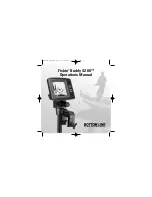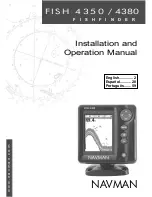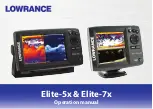
Problem: The bottom depth number is locked onto the surface.
• Severe interference caused by wind chop and air churned into the water can
sometimes fool the Buddy into giving a false bottom depth reading. Try turning on the
SCC (Surface Clutter Control).
Problem: The bottom depth number is locked onto a 2nd bottom.
• A strong second bottom can sometimes fool the Buddy into giving a false depth reading.
Try pulling the transducer out of the water for a few seconds, and then put it back. If the
condition persists, try lowering the gain and, if needed, manually set the range.
24
Problem: No bottom or wrong bottom depth is found.
• Make sure the transducer is at least 8" deep in the water and in an area where no bubbles
or turbulence are present.
• With your hand, rub the face of the transducer and clear off any air bubbles or debris.
• Check the clutter control.
• The bottom may be less than 1.5' deep, or the bottom may be deeper than the Buddy
can display.
Problem: No fish are displayed in the graph.
• When looking for fish in shallow water, remember that the bottom transducer beam covers
an area equal to the bottom depth divided by six. Example: 60' depth = approximately 10'
diameter coverage.
• The gain may be too low. Try turning the gain up.
Problem: The graph is speckled with too many marks.
• Some engine ignition systems may interfere with the Fishin' Buddy 4200's operation.
Aluminum boats can carry this interference throughout the hull. Confirm this by
turning the engine on and off. If necessary, move the Buddy away from the engine or
turn the gain down.
• Some pulse-width-modulated trolling motors may interfere with the Fishin' Buddy
4200's operation. Confirm this by changing the trolling motor's speed or by turning it on
and off. Try moving the Buddy away from the trolling motor. Also, try adjusting the Gain
and SCC controls.
23
FB4200_English.qxd 12/21/2005 12:58 PM Page 24


















